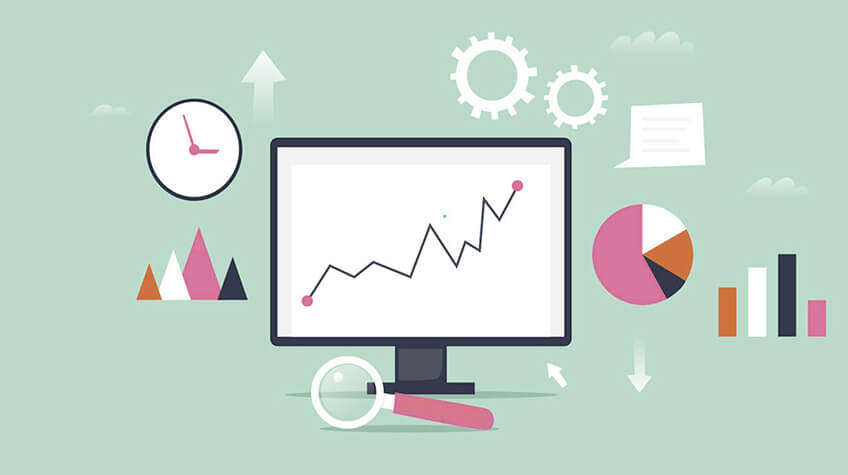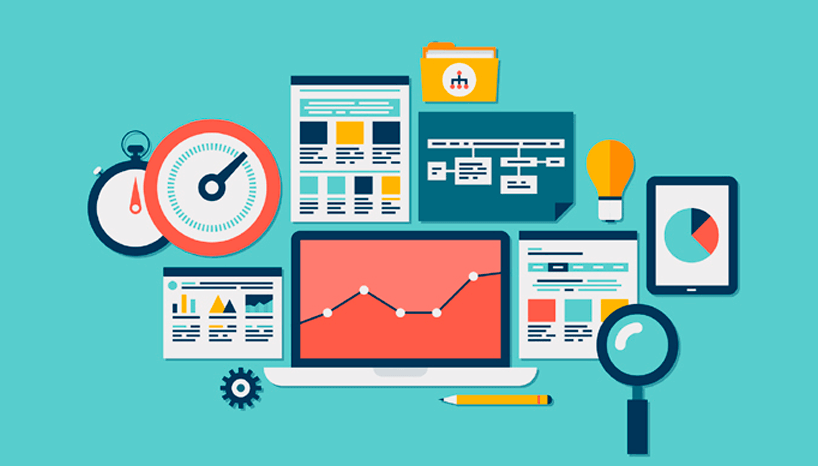
We truly live in the age of data. Make no mistake, big companies are using data to predict customer behaviour, and to try and better understand customers needs. If you run a business, it makes perfect sense to take a deep dive into customer behavior, and both public data, and data you collect yourself, can be used to increase your return on investment.
You may have heard terms like “big data” without fully understanding the meaning behind it. In this guide, we’re delving into that meaning as well as trying to provide some practical guides for using that customer data to provide a higher ROI, no matter what line of business you are in.
What is Customer Analytics?
It’s easier than ever to collect data about your customers, especially in a world where so many people do their shopping online. It’s true that so much of what people are doing on the internet is tracked, and whatever you think of that from a moral standpoint, it’s definitely true that people are leaving a footprint that can be tracked.
That’s where customer analytics come in.
In short, customer analytics is collecting and using data from existing customers (or potential customers) to try and garner a better outlook of what people are likely to do in the future. For example, you might be able to collect data via Google Analytics or Facebook Marketing, which can tell you which type of customers convert best. Perhaps customer behavior is different at one time, as opposed to another. For instance, customer analytics might tell you that you are more likely to convert an ad to a paying customer on a Friday evening, so you could ramp up spending then. Alternatively, it might tell you that people with certain interests are more likely to buy your products.
How to Choose and Use Big Data?

When we say big data, we’re referring to data that is too complex to be dealt with by some traditional applications and data software.
For example, big data could involve a full analysis of every keystroke ever made on a huge website, and every time someone has clicked on a certain advert. The length of time spent on pages, and whether people scroll down to the bottom.
Companies like Google have led the way on this. Google Analytics is a web analytics tool that shows you how powerful data can be. It allows you to understand everything about people visiting your site. Who is on the site, for how long, how they got there and even where they went next.
Big companies collect a lot of their own data, as you would expect. For instance, you can bet that Amazon has a huge amount of data stored regarding their customer behaviors. They can use this to analyze what business decisions they are making next. But that’s not where it ends. By integrating Salesforce and Google Analytics, businesses can get a 360-degree view of their sales and make future decisions based on the collective insights into customer behavior.
RELATED: How to Improve Customer’s eCommerce Experience Through Custom Plugin
What Data Matters and How to Find it?
Naturally, different data matters to different businesses. If you run a travel agency, it probably doesn’t matter to you whether people like to buy one type of wine over another, or what season most people decide to order a pair of trainers, or how long they tend to send making a decision about which antivirus software to buy.

Finding relevant data is the key. Amazon’s API makes a huge amount of data available, a lot of it coming from third-party apps who use the platform. We’re not just talking about Amazon’s site, we’re talking about Amazon Web Services, the cloud database service that millions of customers use worldwide.
Access to big data doesn’t just come from AWS, and a lot of huge companies allow people to access their data via APIs if required. Google trends, the Facebook, Twitter, and Instagram APIs are all examples.
If you delve into your own Instagram account settings, you can see that Instagram collects data regarding what they think you are interested in. This is useful and powerful for a number of companies, and for targeting ads.
Also See: How to Successfully Scale Your Business Through Remote Team
How to Use Customer Data Analytics to Grow ROI
With this in mind, how can you put customer data to practical use in order to grow your return on investment? If you’re going to be spending thousands or even millions of dollars on advertising, it makes sense to target it properly. This will allow you to get the best possible conversion rates.
► Experiment Frequently
If you work with an advertising expert, you’ll probably hear them talk about “split testing” a lot. This is the art of creating multiple ads, or targeting multiple segmented groups, and testing the results for each to see what converts better.
For example, a fashion brand could split test ads targeting different age groups, and find that they convert better when it comes to advertising to the over 50s. Alternatively, they might find that people who are interested in a certain genre of film also convert better. Whether this relationship is coincidental or not is hard to tell sometimes, but continuing to split test and narrow the field can bring you far better results.
► Make Analysis-Based Marketing Decisions
By using public records, data from APIs, or data you have collected yourself, it is possible to make informed marketing decisions. Big data means that there is likely to be information available to you to use, even if you are completely starting from scratch with your marketing.
Analyzing trends, links between data, customer effort score and even customer behavior with regards to impulse buying can make all the difference. You might be able to understand a lot about customers using public records before you even start to collect your own data or run split tested ads.
► Track and Respond to Changing Customer Behavior
Once you’ve front-loaded the work and performed a lot of analysis on your potential customer base, it’s very tempting to set up and forget your ads or other marketing behaviors, hoping that you can continue to profit in the same way.
The truth is that customer behavior changes, and you have to keep up with what data is telling you. Over time, some ads might perform far better than others, or some marketing activities might become totally redundant due to changing consumer attitudes. Think of how the Covid-19 pandemic changed how people behave. This is reflected in the decisions people make regarding buying things, how much they have to spend, and even what plans they have made for the future.
Customer analytics should mean that your ROI gets better over time rather than worse. You will be able to narrow down your pool of potential customers as well as the best methods to appeal to them using analytics effectively.
Conclusion
A lot of people have a perception of big data, and it may be less-than-favorable, but for many marketers and business owners it is the holy grail. The truth is that better targeting is almost always a good thing. It is far better to target customers who are happy to hear about your products and services and therefore likely to buy.
Data, used correctly, can bring your advertising spend down, your return up, or both. Stop wasting money on ineffective ad campaigns and start using data to fuel your growth.






